In today's rapidly changing world of customer communication, a brand needs to have a consistent and unified presence across all its channels. Omnichannel marketing is like a one-stop shop for businesses to connect with customers and make sure their experience is seamless.
By using omnichannel strategies, businesses can make a great first impression that will stick with customers, making them more likely to come back for more. In this blog, we'll show you some real-life examples of how big retailers have used omnichannel marketing to boost their sales and make customers happier.
12 Omnichannel marketing examples from top retailers
- Lounge Underwear
- Big Blanket Co.
- BUBS Naturals
- Sephora
- BonLook
- Rothy’s
- Sweetwater
- ILIA Beauty
- Cocomelody
- Pinallli
- Animals Matter
- OLIPOP
1. Lounge Underwear
With a focus on consistent messaging, omnichannel personalization offers merchants the opportunity to both establish and reinforce their brand’s identity and values. That was the case for Shopify merchant Lounge Underwear, a UK-based home apparel merchant.

“A year ago, we had just begun establishing ourselves in the U.S. market,” writes Kiran Bains, head of paid media at Lounge Underwear. “It’s hard to break into the U.S. as a young British start-up, especially as an ecommerce brand. To be successful, we needed to keep our messaging cohesive in every element of our campaigns.
“From the moment someone finds us on social media, to when they sign up for an email and receive a targeted ad, we have to determine: how do we talk to someone cohesively throughout their customer journey?”
Lounge Underwear found its answer by engaging the services of marketing platform AdRoll. With AdRoll’s assistance, Lounge Underwear’s 2.3 million Instagram followers and 230,000 Facebook fans are now presented with high-quality photography, which allows them to click through to the brand’s store. There, they can access resources on style and fit, as well as incentives to purchase and the opportunity to opt into the company’s email list.
They’re then targeted across social channels, web pages, and devices. This is all a key element of creating a connected experience—and one that’s heavily focused on reinforcing the Lounge brand values. Contacts created through email collection are also leveraged with AdRoll data to identify similar audiences to grow the pool of future customers in driving engagement with the brand.
The result? Exponential revenue growth. Lounge Underwear increased revenue from social platforms by 388%, while managing to drop new audience acquisition costs by 78%.
2. Big Blanket Co.
Shopify merchant Big Blanket Co.—which sells “the biggest, best blankets in the world”—wanted a mobile-first marketing strategy that delivered customer support on every touchpoint. Delivering personalized and timely responses was also important to the brand.
The brand reached out to Attentive as part of an omnichannel marketing campaign. In addition to launching a campaign that triggered text messages to subscribers for personalized experiences, Big Blanket Co. also used historical customer purchase data stored in Shopify to create additional SMS segments, such as subscribers who have abandoned their carts, visited the website, or purchased a specific product or category.
The result? Within only four months of launching its SMS marketing program, text messages sent via Attentive accounted for 18% of Big Blanket Co.’s total revenue.
3. BUBS Naturals
BUBS Naturals sells fitness and nutrition products. It realized it needed to improve its marketing and boost its online sales. In a bid to find more customers, BUBS Naturals started using Shopify Audiences, which helped the brand identify groups of people who were more likely to be interested in its products. This made its advertising more effective and helped it reach more potential buyers.
TJ Ferrara, co-founder of BUBS Naturals, says using Shopify allowed the brand to take control and make its online store much more profitable: “Shopify Audiences has helped us regain confidence with top-of-funnel advertising and reach qualified buyers with return on ad spend as high as 3x. The ability to leverage Shopify’s understanding of intent and create audiences focused on our products significantly enhances our acquisition efforts.”
BUBS Naturals also used new features to its online store. It set up different levels of discounts based on customer groups and made sure to turn off discount codes during big sales. With Shopify, BUBS Naturals could handle all of these things on its own, without outside help.
This new approach was a big success for BUBS Naturals. Its online store conversion rate doubled. Its direct-to-consumer site’s revenue went up by 10%, and 84% of customers came back to shop again.
4. Sephora
Beauty mega-shop Sephora has long built loyalty with its shoppers by providing rewards for every purchase and offering a gift on members’ birthdays.
Take Sephora’s beauty workshops, in-store makeovers, and product testing, for example. Its online membership program replicates the personalized customer service you get as a regular customer—and it’s giving the brand a great ROI, considering that its 10 million members tend to spend 15 times more on its website than those without a nurtured relationship.
“According to the Retail Personalization Index 2022, Sephora is first on the list of brands that personalize,” says Aleksandra Korczynska ofGetResponse. “All their stores were closed during the pandemic, but the company immediately switched to VR demos and virtual consultations. I find this company very customer-centric; the moment you enter their website, they define your location to show you the nearest stores. Sephora’s chatbot offers personalized recommendations, so it is equal to the ladies in their physical store that help you choose the best products.”
5. BonLook
BonLook sells prescription eyeglasses and sunglasses in stores across Canada and worldwide online.
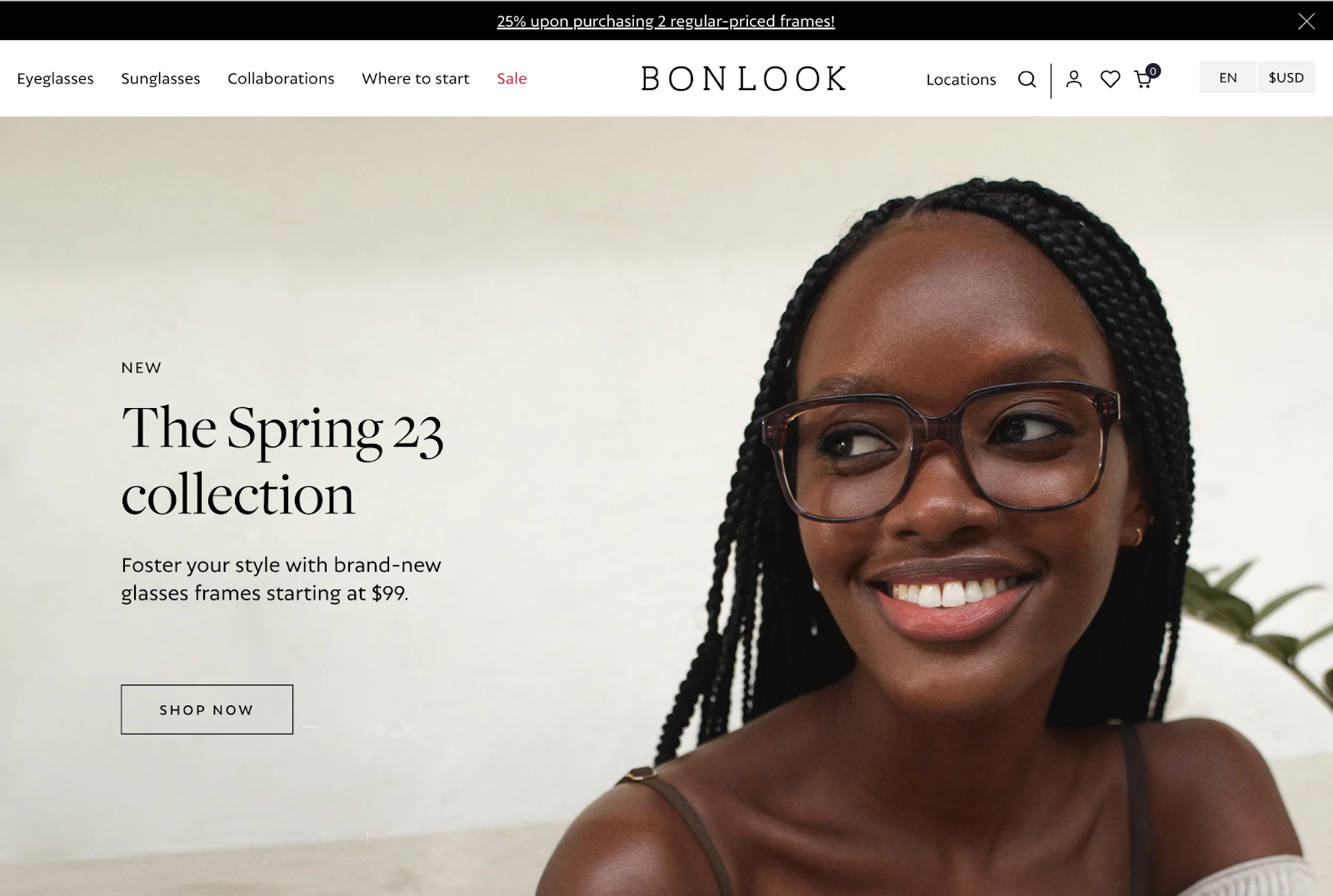
Shopping for glasses is a high-touch, unique buying process, including lens materials, prescriptions, frame types and sizes, styles, and additional lens features. It naturally lends itself to brick-and-mortar shopping.
To replicate this in-store experience for online customers, BonLook launched shopping guides as well as a virtual try-on feature. It gives customers a 180-degree view of how glasses will fit them.
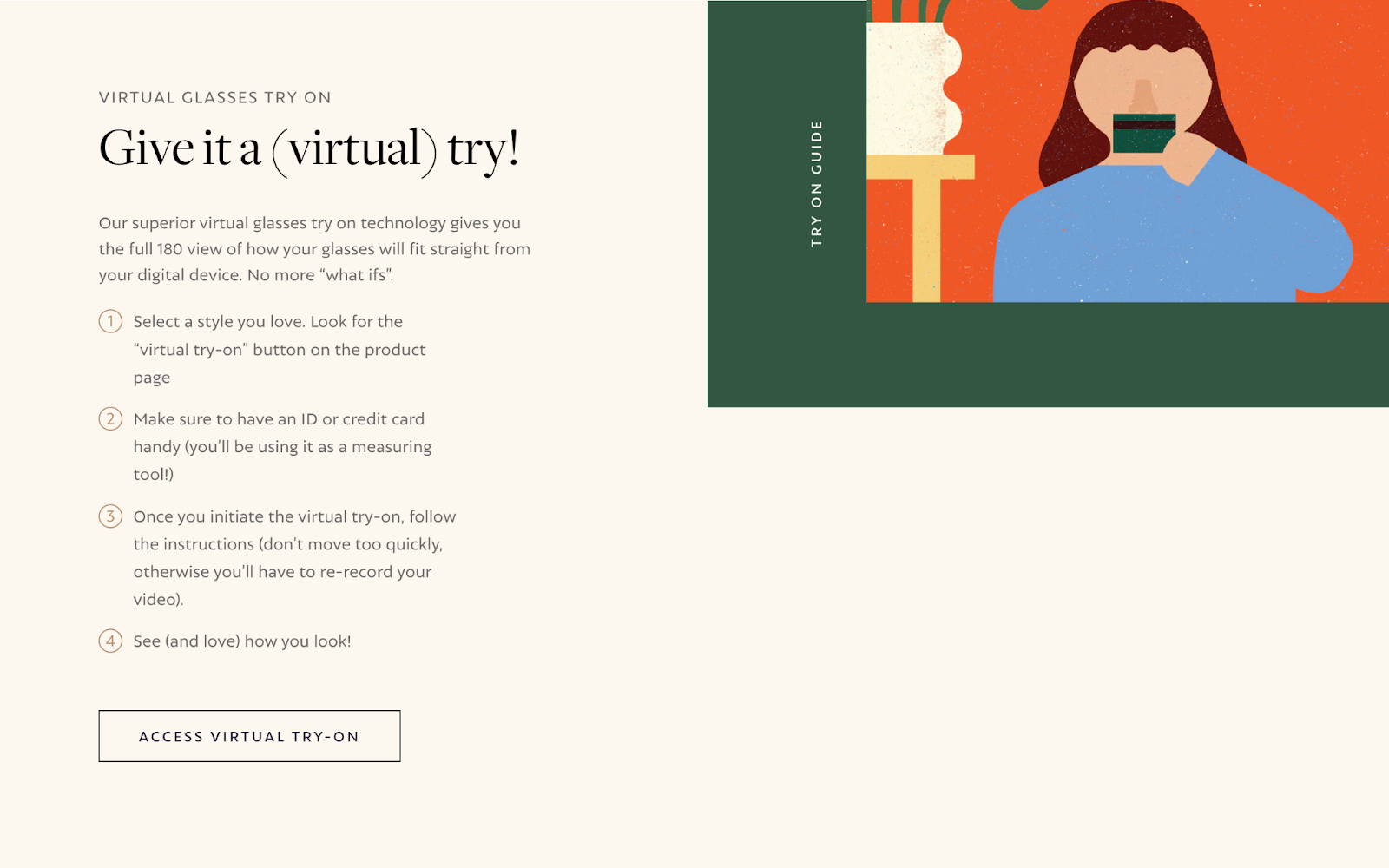
It also offers a custom iOS app that allows associates to help customers decide on frames and then make their purchase. The app integrates with the online store, so customers can purchase that way if they want. In-store associates can see inventory and orders in real time.
BonLook runs this integrated omnichannel strategy on Shopify. Since switching from its previous solution, it has increased its average order value by 18%. As many as 15% of shoppers buy again within six months.
6. Rothy’s
Rothy’s sells comfortable everyday shoes and accessories made from recycled materials. Its omnichannel strategy focuses on unified customer support and a sustainable returns and exchange process.
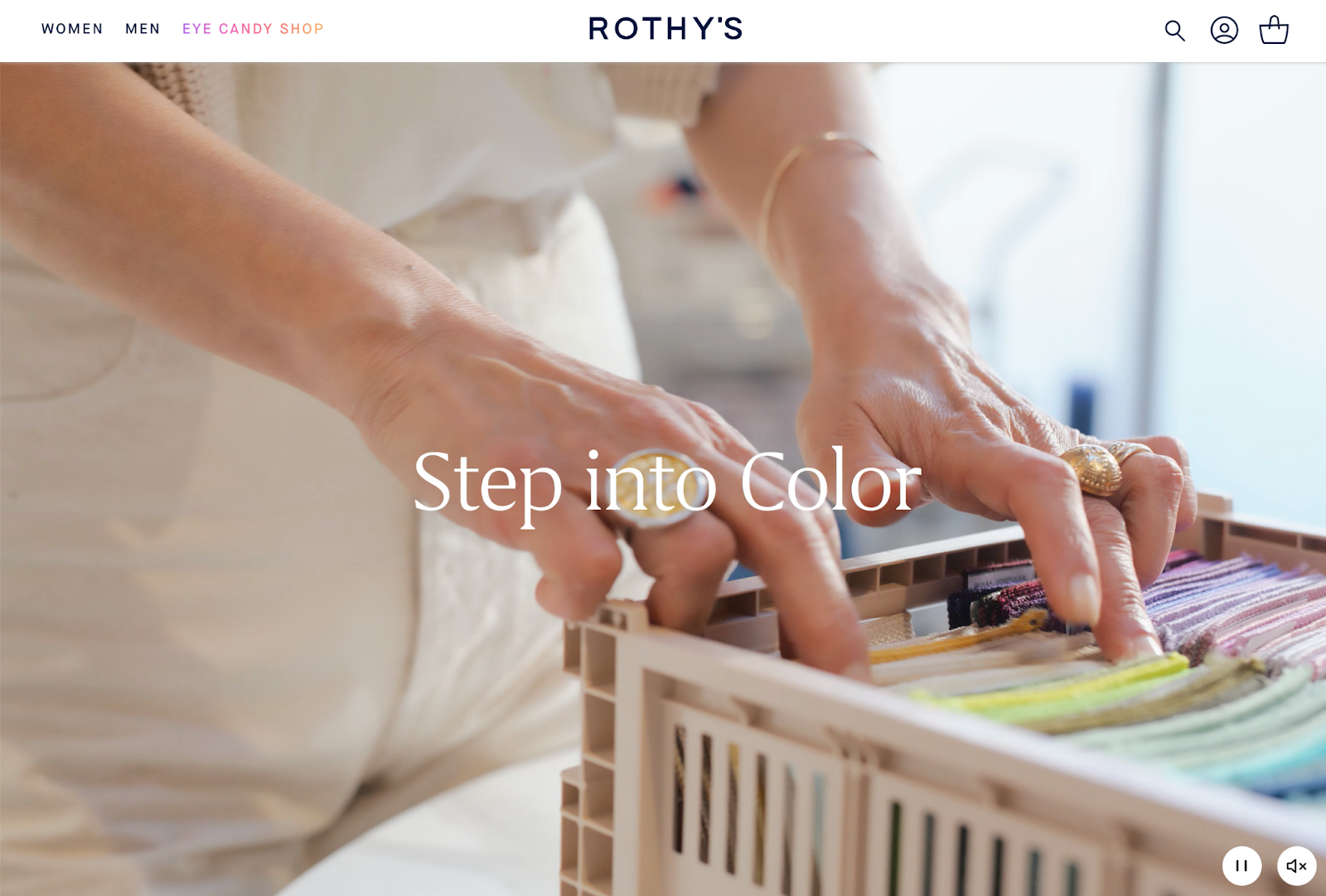
First, Rothy’s wanted to bring all its customer conversations to a single platform. The goal was to avoid making customers repeat their issues to different agents, regardless of the channel.
All customer conversations were stored as individual tickets before the brand started using Gladly for customer support. If a customer email came in, agents didn’t see previous chat conversations or phone calls. Customer service was slow, and customers had to fill in the gaps each time.
With a single conversation timeline, agents now see the entire customer history. Customers can get help on any channel they want, without sacrificing the quality of the answer they’ll get.
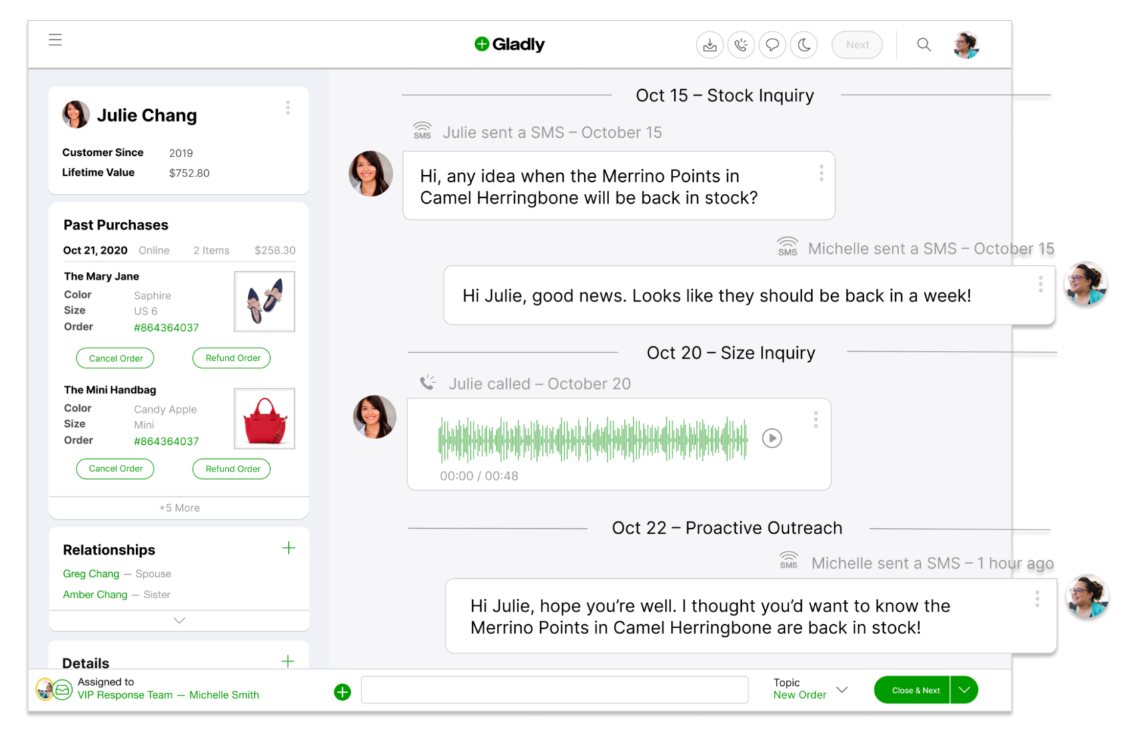
A customer doesn’t even need to have their order number handy—Gladly pulls customers’ orders from Shopify into their profile on Gladly, for a true 360-degree customer view.
“We want to give them the channel of their choice,” Nic Cadwallader, director of customer experience at Rothy’s, told CGT. “We also wanted to leverage our website. We wanted to make sure that we were putting information that’s usable … that we could embed chat capabilities, where they can talk to somebody, but also that we can direct it and predict what questions they might have.”
Second, when Rothy’s opened its first brick-and-mortar store in 2018, it realized it needed to improve its returns process. In-store returns weren’t sustainable, as they created long lines around the block.
The brand’s customers value sustainability, and returns by mail in cardboard boxes weren’t ideal. Rothy’s implemented a returns bar solution and took advantage of an existing returns infrastructure. This encouraged in-person returns without a strain on the physical store.
It gave customers the option to shop and return the way they want, on a channel they want, and that aligned with their values.
7. Sweetwater
Sweetwater sells musical instruments and pro audio equipment in its Fort Wayne store, as well as online. It served millions of customers in 2022, crossing $1.57 billion in revenue.
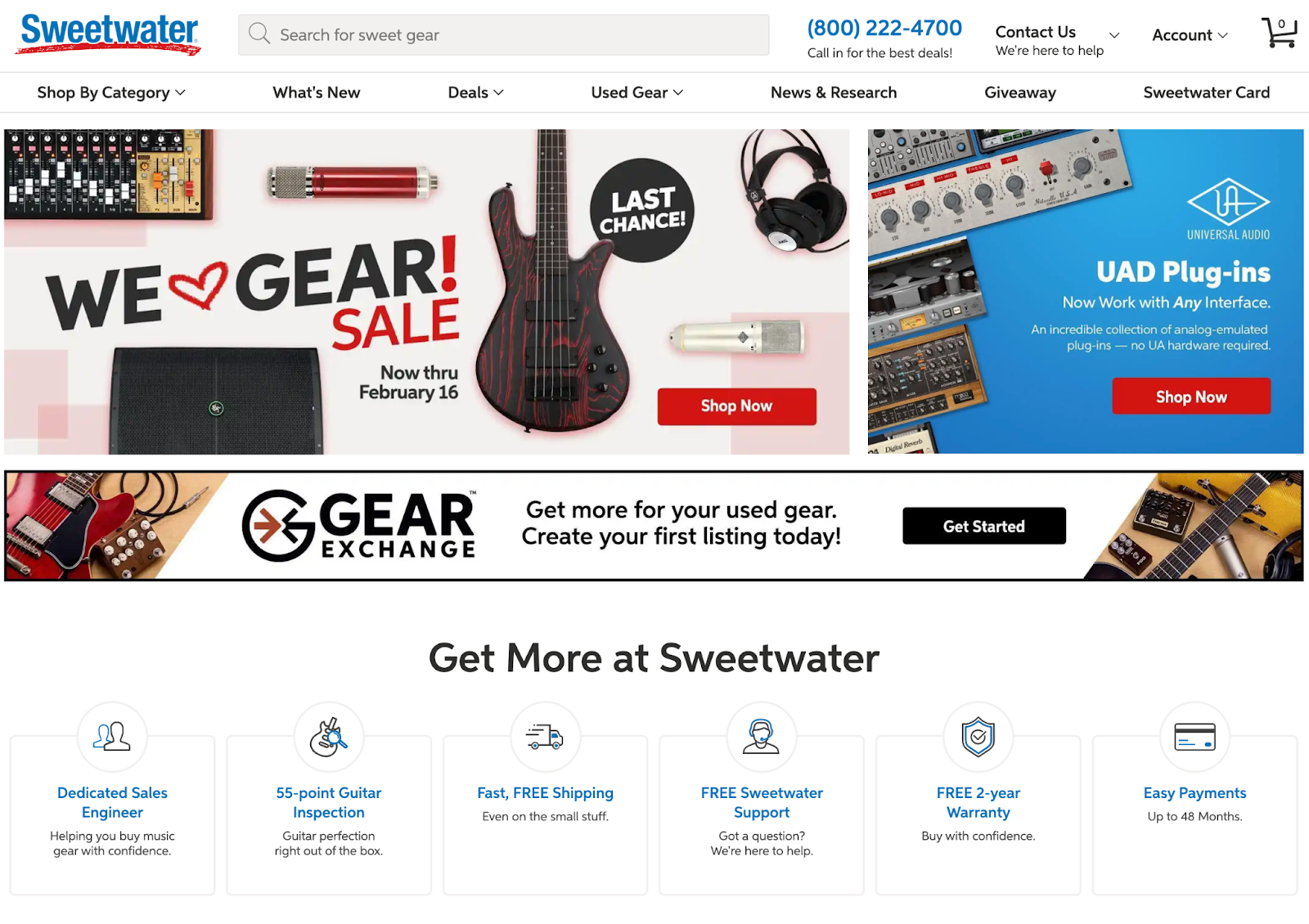
Its retail location features massive guitar galleries, a drum room, and fully loaded demo studios. Sweetwater’s expert staff is there to help—a dream come true for a music gear buyer.
So what about shopping online? Sweetwater’s omnichannel strategy helps recreate the in-store experience.
Sweetwater’s category pages feature buying guides for the category you’re viewing at the top:
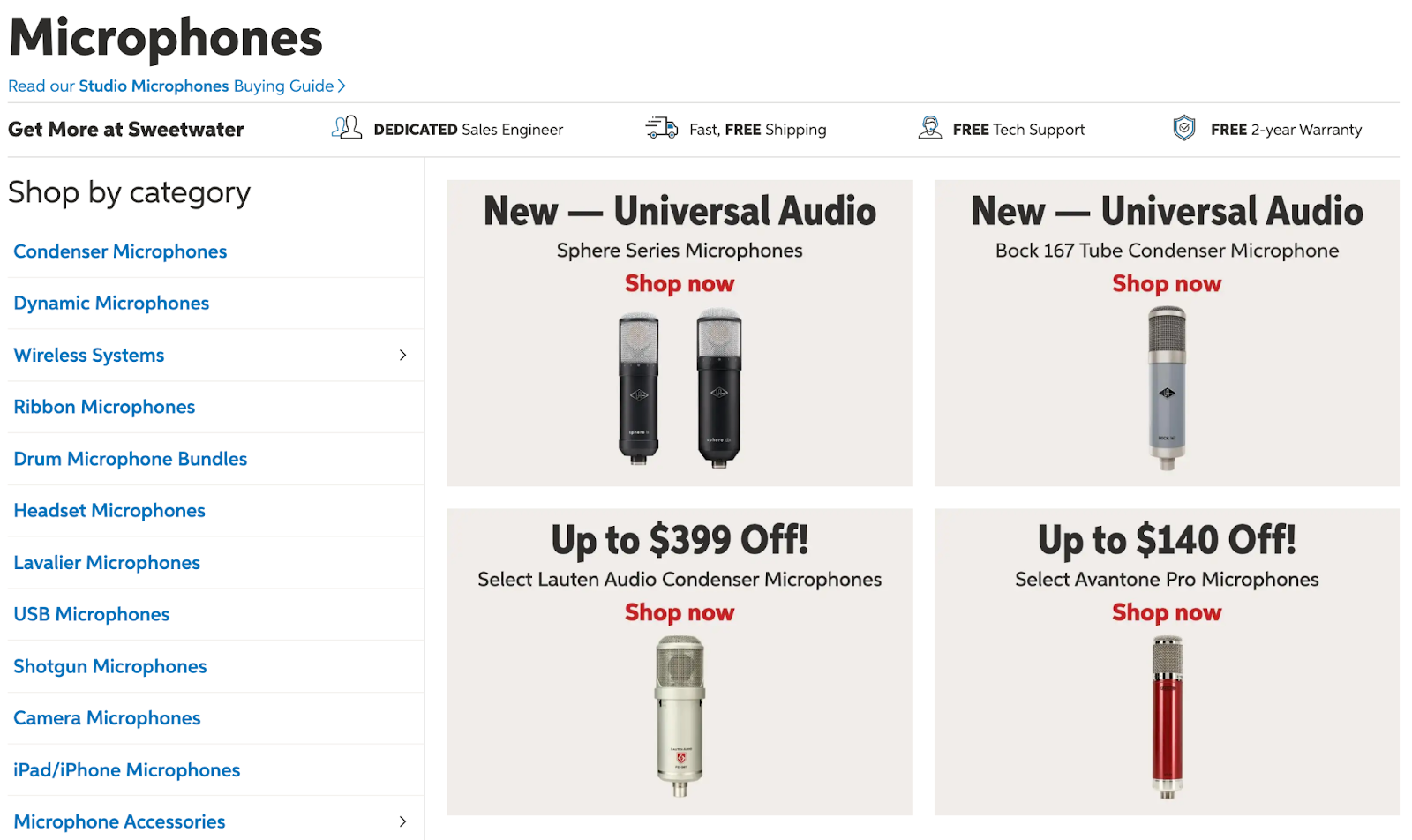
As you browse categories and products, the top bar and the bottom right corner remind you to ask for help through phone or email, if you need it:
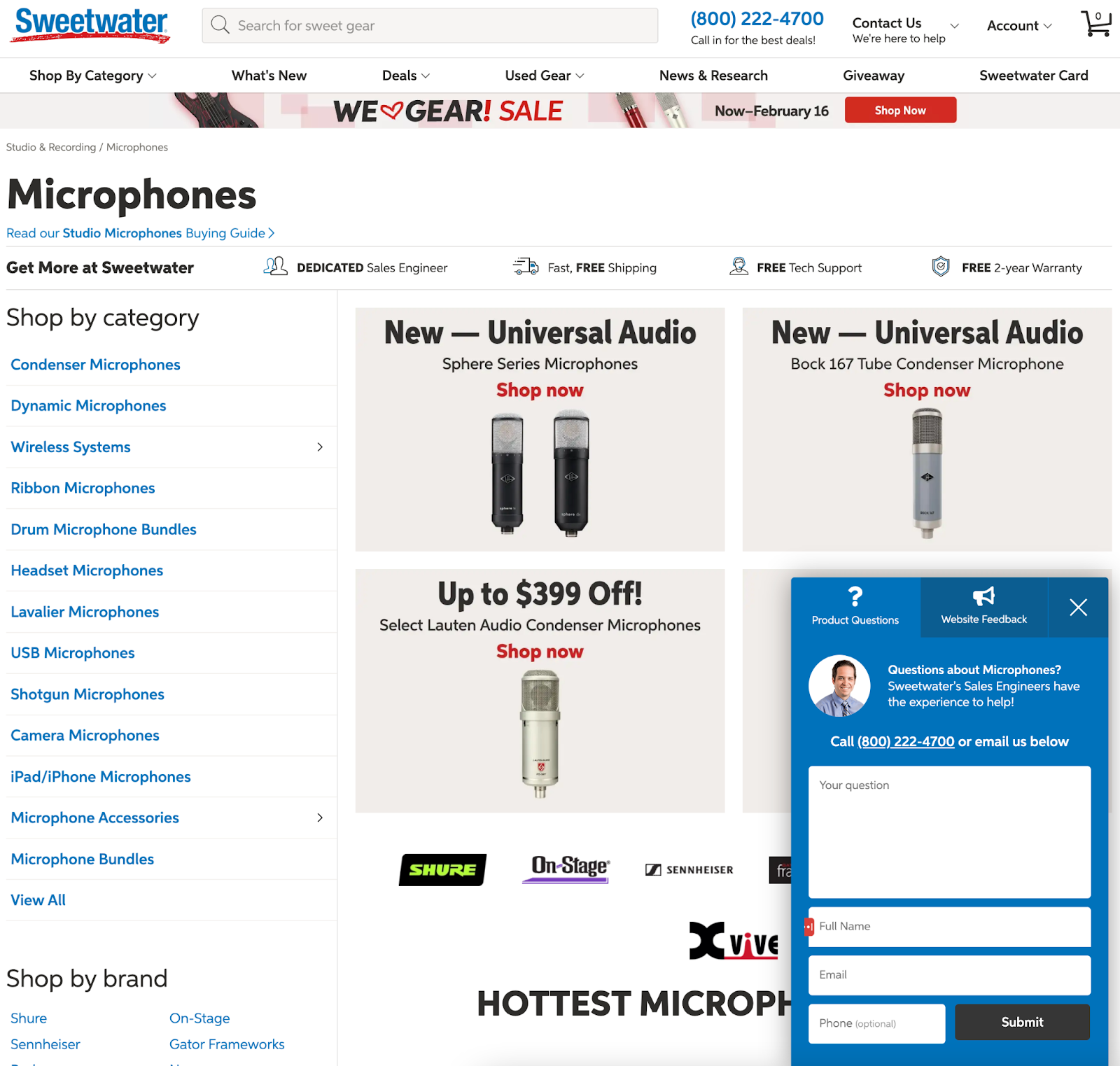
The real magic happens as you get deeper into your buying journey. Sweetwater embodies the seamless omnichannel approach to customer experience and assigns each customer a sales engineer.
These sales engineers learn about the customer’s style, setup, and ambitions, and help them choose the best option. Even before they make a purchase, shoppers can quote their cart ID so agents can instantly see what they’re shopping for:

“It’s never about a sale, it’s about providing the best experience possible during every interaction,” Chuck Surack, Sweetwater’s CEO and founder, told Retail Customer Experience. “Our sales engineers spend 13 weeks in training before they’re able to interact with customers. … That commitment to making sure our employees have the tools they need is uncommon within the music retail industry,”
He calls the brand experience omnichannel, while remaining “dedicated to investing in an ‘old-school’ approach to customer experience.”
After buying from Sweetwater, customers get an email follow-up, a phone call from a sales engineer to answer any questions about the order, and another call after the items arrive.
Music gear often includes highly personal and big-ticket items. Sweetwater knows this and creates an experience that matches it, even when it’s not in-store.
8. ILIA Beauty
ILIA Beauty is a clean beauty brand sold online and in stores like Sephora, Credo, and Walmart.
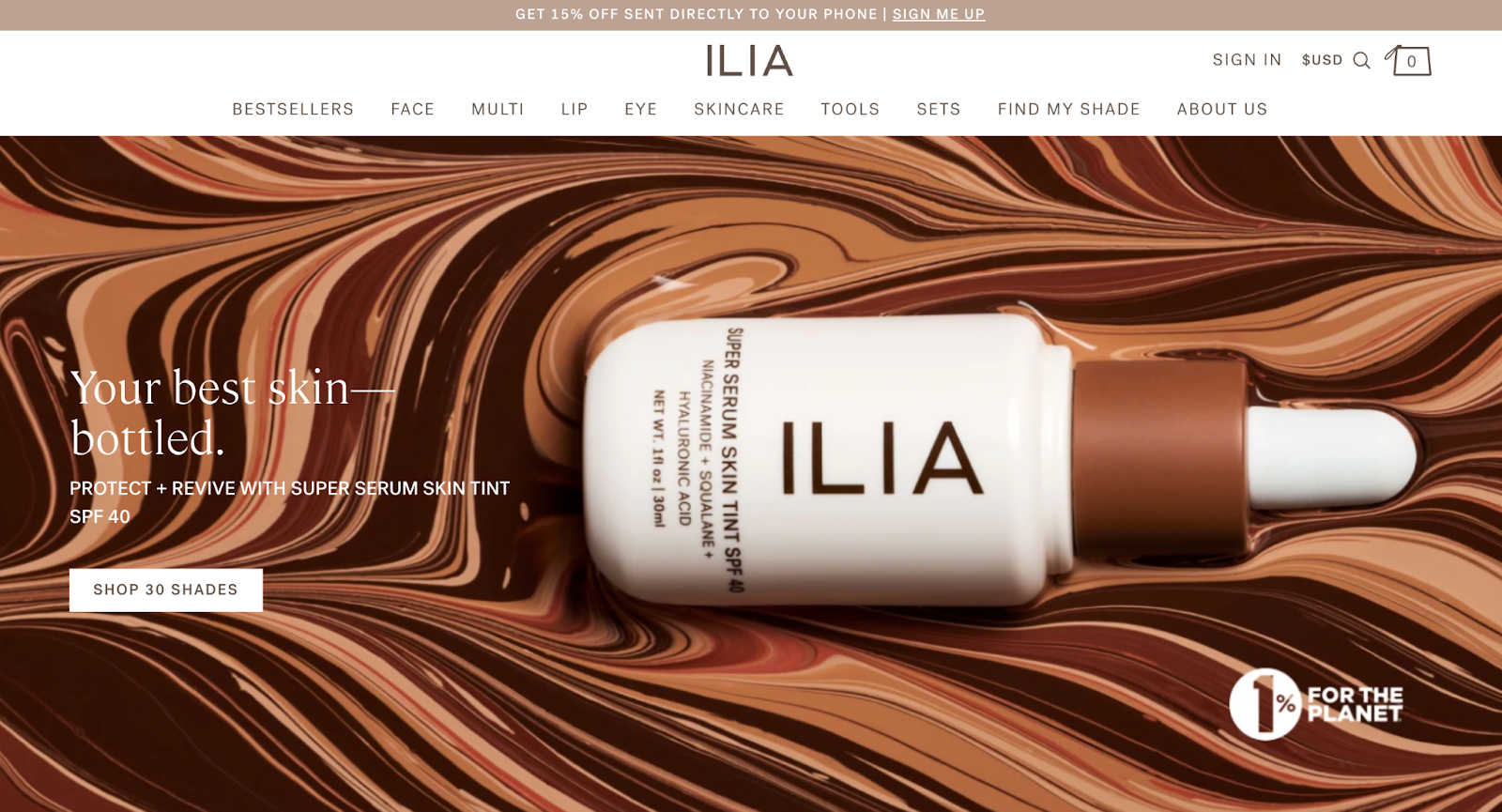
Its online shopping experience takes into account the fact you can’t try out a lipstick color in real life. That’s what the “Find My Shade” option is for:
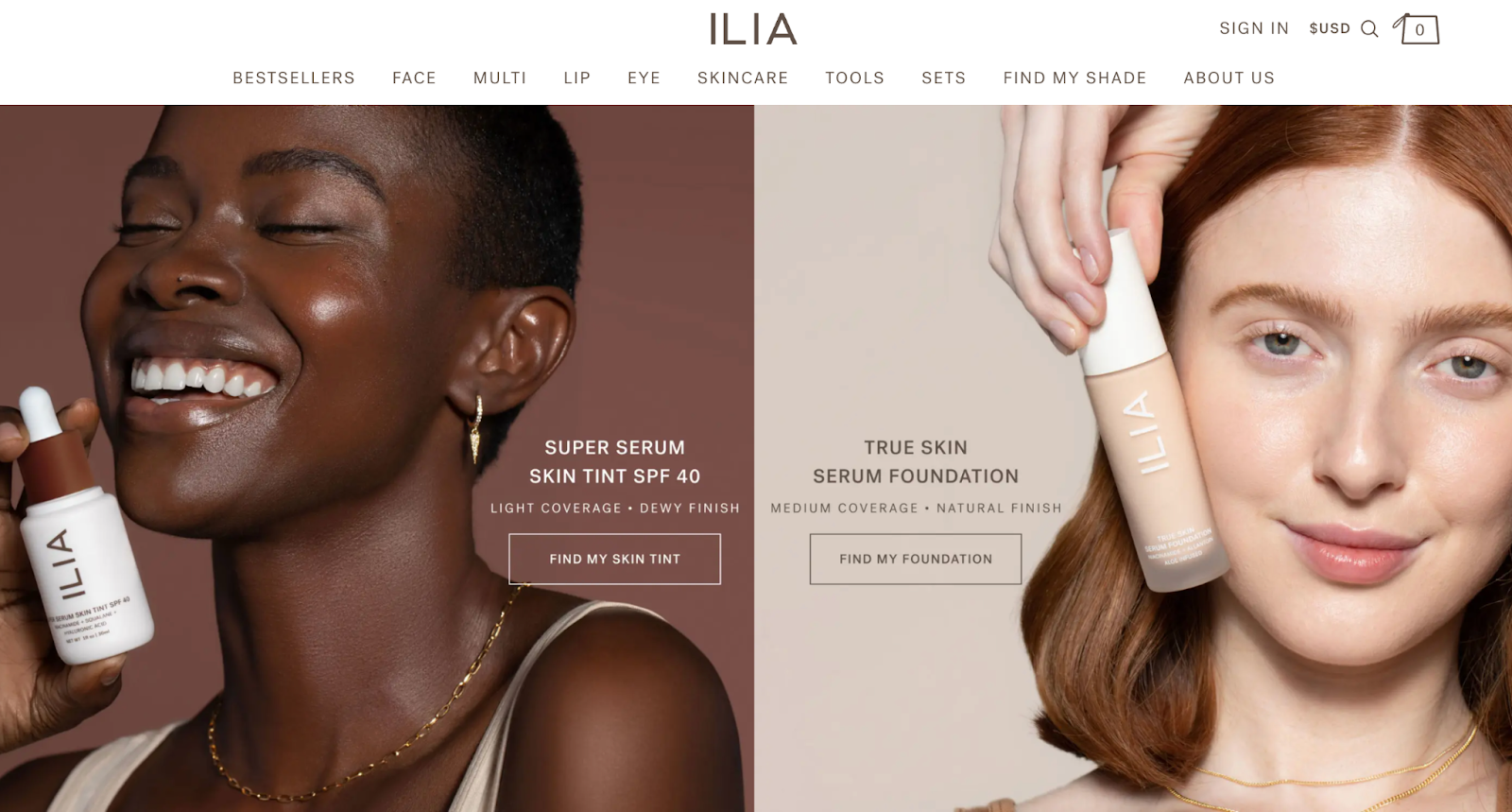
Choosing a foundation shade is no different. There’s an extra option here: uploading a selfie to get help from a brand specialist.
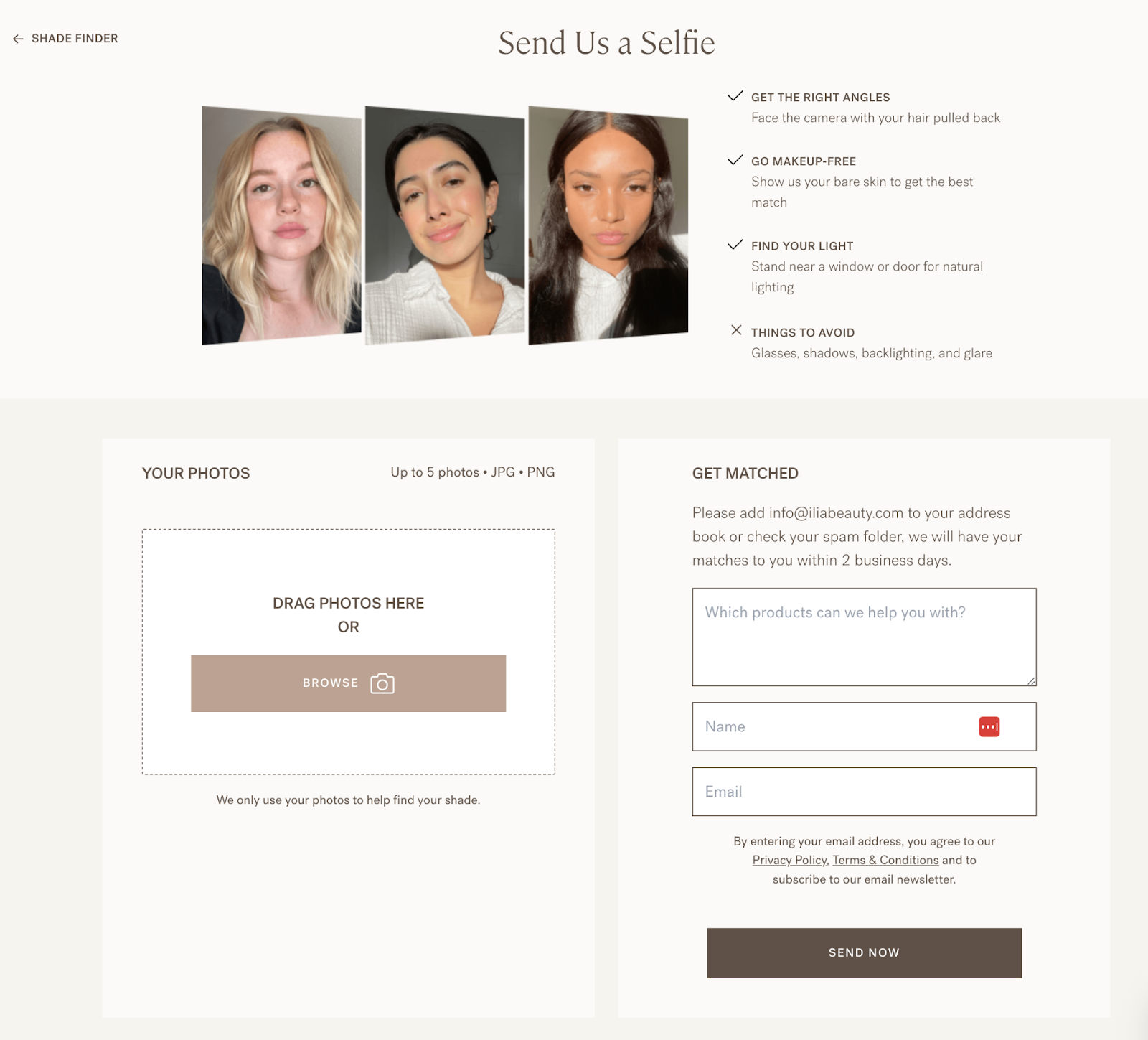
Wherever customers shop from, they can go through express checkout with Shop Pay or PayPal.
ILIA’s omnichannel efforts also include offline advertising. It includes a feature on a Manhattan tour bus, billboards in LA, and wild postings in New York City. These were placed near Credo and Sephora stores.
9. Cocomelody
Cocomelody sells affordable wedding dresses, bridesmaid dresses, and formal dresses.

Its digital marketing team used Google Ads and sponsored Facebook posts to drive customer engagement. But it struggled to keep these users around, and its ad conversion rates were stagnant.
Once it looked at the data more holistically, it saw a high cart abandonment rate, but also that these users came back to the site often. Cocomelody’s customers were interested, but struggling: they couldn’t touch or try on these dresses.
The solution: home try on for just $25 per dress, plus easy returns, and fabric swatch delivery.
Cocomelody then targeted cart abandoners to let them know of these new options, including push notifications, SMS messages, and personalized emails. This increased sales by 30%.
Other assets Cocomelody built to provide a seamless customer experience include color charts, a Facebook group with more than 36,000 members, fit guides, and measurement guides.
Want more omnichannel marketing examples? Read our posts on examples of omnichannel brands and what you can learn from them.
10. Pinallli
Founded in 1984, Pinalli is a specialist Italian beauty retailer that offers over 40,000 products from 350 different indie beauty brands. With over 70 points of sale in Italy, in May of 2022, Pinalli focused heavily on the ecommerce side of its business with a new custom-built platform. Omnichannel marketing played a key role in turning this sales channel into a raging success.
Pinalli used Shopify and Sintra, a Plus partner consulting agency, to optimize its marketing campaigns and integrate its own customer data platform for more accurate targeting.
“Omnichannel marketing requires consistency and seamless organization,” says its ecommerce manager Daniele Rosetti. “Every single touch point needs to be integrated into a unique system that encompasses our ecommerce and offline stores. Click and collect, price lists, promotions, digital totems, and logistics need to communicate in real-time through a stable and efficient infrastructure.”
As a result of its move to Shopify and investment in omnichannel marketing, Pinalli almost doubled transactions and improved its conversion rate by 28%.
11. Animals Matter
Animals Matter started in the reverse order of many booming online brands. Back in 2014, the pet brand sold its products to retailers through catalogs. Problems arose when sales began to dwindle as customers bought directly from online marketplaces like Amazon.
In a bid to strengthen the brand and diversify its customer base, Animals Matter used ProductCart to list the products. Things still weren’t perfect; it had no supporting online presence. No email list, no social media feeds, no advertising—not even an online store that allowed customers to buy products without interacting with a brand representative.
Founder Scott Avera eventually turned to Shopify and upgraded to the Shopify Plus plan a few months later: “They helped us go from just thinking we should sell direct-to-consumer to having social media channels, a Google integration, a Shopping integration, and email integration—they helped us get all these things in place and educated us.”
Animals Matter now has its own omnichannel marketing campaigns that run on autopilot. The brand has an active presence on Instagram, Facebook, Instagram, Pinterest, YouTube, and Google Ads. And it’s paying off: sales are increasing 45% year over year; returning customers are up 46%; and conversions have increased by more than a third.
12. OLIPOP
Some brands like Allbirds and Parachute Homes are opening their own stores to be closer to suburban shoppers. Others are collaborating with retailers to bring their products into physical stores, but not necessarily their own. Olipop is a good example.
Ed Kolovson, director of business insights at Olipop, tweeted about how expanding into retail has boosted the brand’s sales: “Olipop has increased door count by about 50% since the start of the year (excluding Walmart launch). … Sales have not declined one bit and Amazon sales have increased over 50% since the start of the year.
“Expansion into retail has led to more awareness and customers are able to try the product in stores first,” Ed said. “This has led us to an increase in first-time purchasers subscribing thus increasing our lifetime value.”
Make omnichannel marketing work for your brand
In today’s highly competitive retail landscape, omnichannel marketing is essential to a brand’s success. However, it’s not an easy endeavor, and it takes time, tools, and strategy to get it right.
Thankfully, Shopify has its point-of-sale and ecommerce systems integrated into one easy-to-use platform. Shopify helps merchants create a personalized and seamless experience for customers—no matter where they are engaging with your brand.


